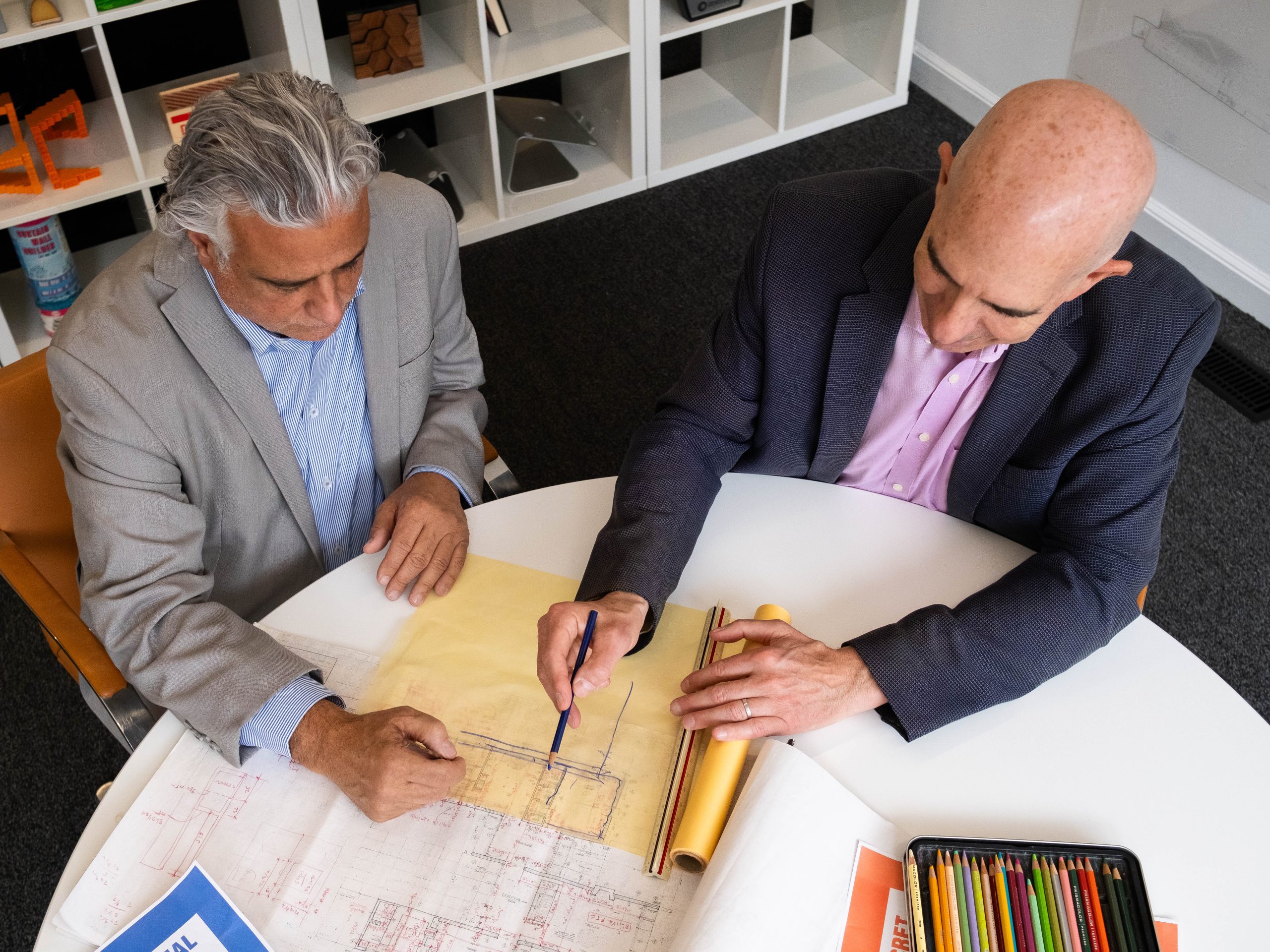
Safe rooms, panic rooms, and secure rooms are key elements of proactive security plans PCC Secure develops for high-net-worth individuals, families, and major corporations. With integrated security design, consulting, and training, PCC Secure ensures these vital spaces are not only physically secure but also fully operational when needed most. We draw on over 25 years of experience in integrated security consulting to provide comprehensive design and construction strategies. These secure spaces offer essential protection from security threats and environmental hazards.
At PCC Secure, our goal is to reduce and manage personal and organizational risks through advanced protection techniques and cutting-edge technologies. Our holistic approach integrates risk assessment, strategic placement, expert construction oversight, and operational readiness to ensure your safe room is functional, discreet, and effective.
There is considerable confusion about the terminology used to describe secure rooms. Essentially, they all serve the same purpose: providing a safe and secure space. Some people are more comfortable with or prefer specific terms. Whatever it is called, it’s still essentially the same. Let’s look at the basic definition of each.
All PCC Secure safe spaces are meticulously designed with a focus on your safety, adhering to comprehensive risk assessments. They are designed to fulfill two key protective functions: physical protection and operational continuity, tailored to meet the specific requirements of each client. It is important to remember that safe rooms are not just a secure closet, but can be of any size and shape, and are often a critical component in business continuity.
The first function is physical protection. Safe rooms are designed to provide a highly secure physical barrier that shields occupants from various external threats, such as forced entry, armed attacks, chemical exposure, or natural disasters (e.g., tornadoes, hurricanes). The design uses reinforced materials and structural components to resist impacts, blasts, and penetration. It maintains structural integrity under extreme conditions and provides a haven where employees or family members can seek shelter until the threat passes or help arrives. Customization ensures that the safe room’s size, location, access points, ventilation, and amenities are tailored to each client’s unique building layout, threat assessment, and occupant needs.
The second function focuses on emergency preparedness and operational continuity. In addition to serving as a protective shelter, safe rooms function as essential hubs for emergency response, communication, and maintaining operations. Customizing these features to fit each client’s needs involves adding integrated communication systems (radios, alarms, emergency phones) for real-time updates and coordination. Designing safe rooms to support emergency drills and training helps prepare occupants to act quickly and effectively. Equipping the space with necessary supplies, monitoring systems, and backup power ensures continuity for occupants and supports broader corporate or family emergency plans. This approach reduces downtime and boosts resilience.
This dual role ensures the safe room is not just a static shelter but an active part of a comprehensive security and risk management strategy.
Creating a safe room begins with a detailed assessment of your threat environment, which combines intelligence, occupant needs, and environmental factors to inform the design. We focus on strategic placement for quick and secure access, avoiding vulnerable ‘fatal funnel’ zones. Our construction management utilizes top standards for ballistic protection, redundant systems, and advanced security technologies, all tailored to your specific needs. Supported by an experienced team and training programs, our process offers reliable protection when it matters most. Below is our comprehensive approach.
PCC Secure’s experienced Threat Assessment Group (TAG) conducts comprehensive analyses to identify actual and potential risks, including those posed by criminal threats, workplace violence, and environmental hazards. Recognizing that high-net-worth lifestyles demand the utmost attention to family safety and asset protection, our risk assessments define key parameters:
Environmental considerations, including regional weather patterns, flooding risks, and air supply requirements.
This foundational knowledge informs every design decision, ensuring no element is overlooked.
One of the key tactical considerations for PCC Secure clients is the placement of a safe room. While basements are traditionally considered, PCC Secure advises against using them due to risks of flooding and delayed access. Instead, we focus on placing safe rooms in frequently used, occupied areas with direct, secure access to minimize exposure during emergencies.
Importantly, we emphasize the importance of avoiding the deadly “Fatal Funnel.” The fatal funnel is a narrow corridor or stairwell where occupants are vulnerable, running directly through the attack, while trying to reach the safe room. Our designs account for occupants being able to avoid these hazardous choke points and reach the safe room quickly and covertly.
PCC Secure holds itself to exacting standards for safe room construction:
The creation of a secure safe room by PCC Secure is the result of a collaborative effort by a highly specialized and experienced team.
Recognizing the specialized nature of safe room projects, PCC Secure’s team includes:
We emphasize that relying on personnel without expertise in these specialized materials—such as general contractors unfamiliar with blast-resistant construction or audio-visual teams not trained in secure technology integration—poses significant risks to the integrity and reliability of the safe room.
Strict document control is essential to maintaining the highest standards of security and privacy throughout the safe room development process. Sensitive information related to threat assessments, design specifications, materials used, and security systems can pose significant risks if improperly managed or disclosed. While such rigorous protocols are often mandated only in government projects, PCC Secure upholds these stringent measures voluntarily to protect our clients’ privacy and the integrity of their security solutions. By controlling access to documents, enforcing secure handling procedures, and ensuring all team members adhere to confidentiality requirements, we prevent unauthorized disclosures that could compromise safety or expose clients to targeted threats. This disciplined approach to document management is a critical component of our commitment to delivering trusted and discreet security services.
Training and operational preparedness are critical components that extend beyond the physical construction of the safe room. At PCC Secure, we offer comprehensive training programs tailored for both security personnel and potential occupants, ensuring effective use under stress. This includes hands-on familiarization with locks, alarms, communication systems, and other security technologies, as well as simulated drills and scenario-based exercises that build confidence and muscle memory. Executive security coaching tailored to the unique needs of each client further enhances readiness. By adhering to our mantra of “practice, drill, rehearse,” we ensure that when a crisis arises, occupants and security teams respond calmly and efficiently, preventing panic from undermining their safety.
PCC Secure combines deep security expertise, cutting-edge technology, and a client-centric approach to deliver safe rooms, panic rooms, and strong rooms that truly protect. From risk assessment through design, construction, and training, our integrated methodology provides clients peace of mind and preparedness in a complex threat landscape.
Discover the benefits of safe rooms for your home or workplace. Reach out now!
Visit us at: https://pccsecure.com/integrated-security-design-planning-engineering/
Call today to find out more: 914-576-8706
About PCC Secure
For over 20 years, PCC Secure has delivered comprehensive, integrated security, investigation, consulting, and training solutions worldwide. Our mission is to mitigate personal and organizational risk through advanced protection techniques and cutting-edge technology — all with discretion and confidentiality.

Unlock the full potential of your security and risk management with our expert-guided STAR Power Sessions. Get personalized coaching tailored to your organization’s unique needs. Don’t leave your business vulnerable – Book Your STAR Power Session Now!